Difference between revisions of "PH value"
| Line 4: | Line 4: | ||
| − | == | + | ==The pH-value of leather== |
| − | + | The '' pH '' of a substance means, at ten-logarithmic intervals, how acidic or basic this substance is. Distilled water is defined as having a pH of 7, so that a substance with a pH of 8 (such as seawater) is ten times more basic and a substance with a pH of 5 (such as coffee) is one hundred times more acidic. Coca Cola has a pH of 2 and is therefore one hundred thousand times more acidic than distilled water. | |
| − | In | + | In the [[leather production|production of leather]] and [[leather care]], the pH value is of importance as leather is produced with a pH of about 4.5 to 5.5. This pH ensures that the fat and tannins bound in the leather are kept. |
| − | + | With the [[leather damages|aging of the leather]], the acid-base ratio shifts to the alkaline (above pH 7), which makes the leather unstable. The leather darkens, becomes hard and brittle. The shift is due to age, humidity, sun, but also by perspiration (skin, hair contact with [[car leather|car]] and [[leather furniture|furniture leather]], sweat by feet in [[leather shoes|shoes]] (daily between 100-200 ml), hands in [[Leather gloves|gloves]] or sweated collars of [[leather clothing|leather jackets]]). | |
| Line 20: | Line 20: | ||
</p> | </p> | ||
<p align=center> | <p align=center> | ||
| − | '' | + | ''Typical damage due to skin and hair contact in [[leather furniture|furniture]] (head and armrests).''<br></p> |
<p> </p> | <p> </p> | ||
| Line 31: | Line 31: | ||
</p> | </p> | ||
<p align=center> | <p align=center> | ||
| − | '' | + | ''[[Leather steering wheel|Steering wheels]] also react to skin contact with time. Due to the pH shift, the leather is also more susceptible to [[Moldy leather - Mouldy leather|mold]].''<br></p> |
<p> </p> | <p> </p> | ||
| Line 43: | Line 43: | ||
</p> | </p> | ||
<p align=center> | <p align=center> | ||
| − | '' | + | ''Skin-damaged car armrests and a shift knob.''<br></p> |
<p> </p> | <p> </p> | ||
| − | + | Another reason are alkaline [[leather cleaner|cleaners]]. Most household cleaners are alkaline, because of the good cleaning effect. However, leather cleaners should not be alkaline, which is technically possible, but not considered by all manufacturers. | |
| − | + | The [[leather care]] should also restore or maintain the acidic condition. Particularly, when old leather is contaminated with mold, acetic acid as a pH regulator is excellently suitable for removal and prevention. Also in the case of a restoration of leather, a pH-value regulation is as important as the [[Oils & fats in the leather industry|re-greasing]] to make the leather more resistant to environmental influences. | |
| − | + | However, there is also a limit to how much acid a leather is capable of. Therefore, when regulating the pH, always be very careful not to damage the leather. A characteristic feature of book bindings, which can be observed in libraries, is [[red declay]], when sulfur dioxide reacts from the air in the leather to sulfuric acid, which irreparably erodes [[Leather book cover|book covers]]. Sulfuric acid is one of the strongest acids and is far below the minimum pH-value of 3.5 for leather. | |
Revision as of 17:51, 5 February 2017
The pH-value of leather
The pH of a substance means, at ten-logarithmic intervals, how acidic or basic this substance is. Distilled water is defined as having a pH of 7, so that a substance with a pH of 8 (such as seawater) is ten times more basic and a substance with a pH of 5 (such as coffee) is one hundred times more acidic. Coca Cola has a pH of 2 and is therefore one hundred thousand times more acidic than distilled water.
In the production of leather and leather care, the pH value is of importance as leather is produced with a pH of about 4.5 to 5.5. This pH ensures that the fat and tannins bound in the leather are kept.
With the aging of the leather, the acid-base ratio shifts to the alkaline (above pH 7), which makes the leather unstable. The leather darkens, becomes hard and brittle. The shift is due to age, humidity, sun, but also by perspiration (skin, hair contact with car and furniture leather, sweat by feet in shoes (daily between 100-200 ml), hands in gloves or sweated collars of leather jackets).
Typical damage due to skin and hair contact in furniture (head and armrests).
Steering wheels also react to skin contact with time. Due to the pH shift, the leather is also more susceptible to mold.
Skin-damaged car armrests and a shift knob.
Another reason are alkaline cleaners. Most household cleaners are alkaline, because of the good cleaning effect. However, leather cleaners should not be alkaline, which is technically possible, but not considered by all manufacturers.
The leather care should also restore or maintain the acidic condition. Particularly, when old leather is contaminated with mold, acetic acid as a pH regulator is excellently suitable for removal and prevention. Also in the case of a restoration of leather, a pH-value regulation is as important as the re-greasing to make the leather more resistant to environmental influences.
However, there is also a limit to how much acid a leather is capable of. Therefore, when regulating the pH, always be very careful not to damage the leather. A characteristic feature of book bindings, which can be observed in libraries, is red declay, when sulfur dioxide reacts from the air in the leather to sulfuric acid, which irreparably erodes book covers. Sulfuric acid is one of the strongest acids and is far below the minimum pH-value of 3.5 for leather.
| Substance | pH-value | Type |
|---|---|---|
| battery acid | <0 | ↓ |
| Magensäure (nüchterner Magen) | 1,0–1,5 | sauer |
| Zitronensaft | 2,4 | |
| Cola | 2–3 | |
| Fruchtsaft der Schattenmorelle | 2,7 | |
| Essig | 2,9 | |
| Orangen- und Apfelsaft | 3,5 | |
| Wein | 4,0 | |
| Saure Milch | 4,5 | |
| Bier | 4,5–5,0 | |
| Saurer Regen | < 5,0 | |
| Kaffee | 5,0 | |
| Tee | 5,5 | |
| Regen (natürlicher Niederschlag) | 5,6 | |
| Mineralwasser | 6,0 | |
| Milch | 6,5 | |
| Wasser (je nach Härte) | 6,0–8,5 | |
| NEUTRAL | 7,0 | |
| Menschlicher Speichel | 6,5–7,4 | |
| Blut | 7,4 | basisch |
| sea water | 7,5–8,4 | |
| pancreas juice (intestinal juice) | 8,3 | |
| soap | 9,0–10,0 | |
| household ammonia | 11,5 | |
| bleach | 12,5 | |
| cement | 12,6 | |
| sodium hydroxide solution (caustic soda) | 13,5–15 |
Additional information







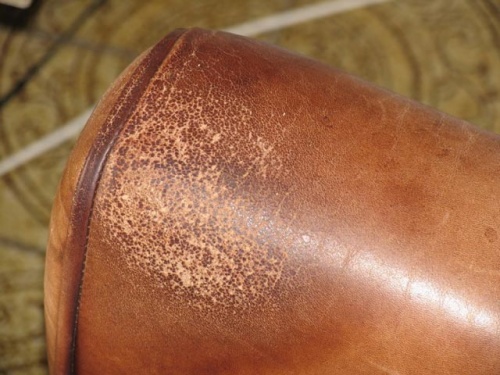
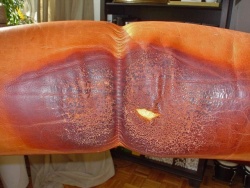
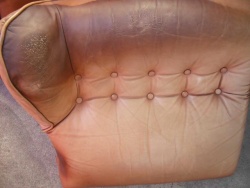


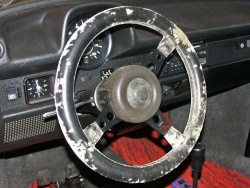
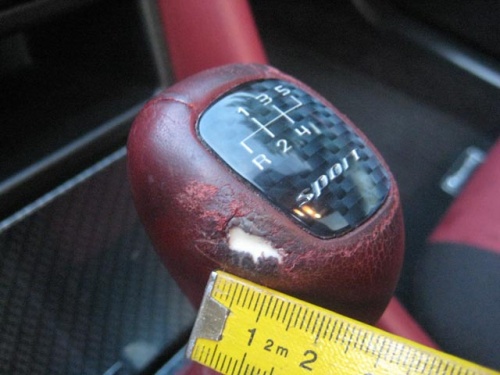
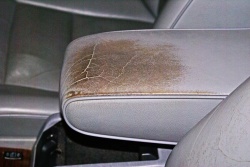
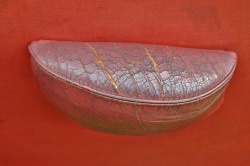

 a kotori web solution
a kotori web solution